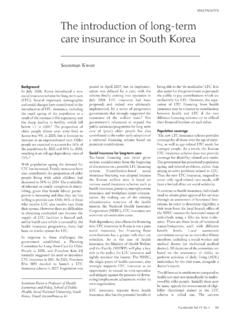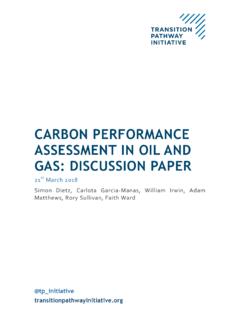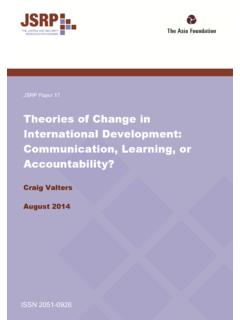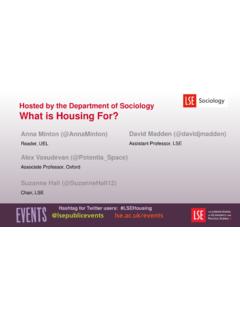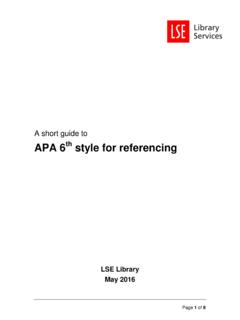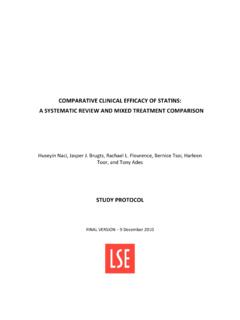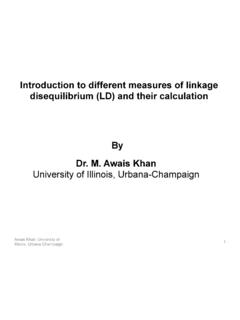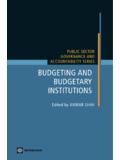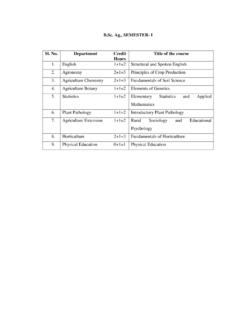Transcription of Ethnic population distribution, immigration and …
1 1 Ethnic population distribution , immigration and internal migration in Britain: what evidence of linkage at the district scale? John Stillwell and Oliver Duke-Williams School of Geography, University of Leeds, Leeds, LS2 9JT, United Kingdom Email: Paper prepared for the British Society for population Studies Annual Conference at the University of Kent at Canterbury, 12-14 September 2005 Abstract The geographical distribution of Ethnic minority groups across the nation is characterised by concentrations in London and in certain provincial towns and cities. As non-white Ethnic minority populations in Britain increase in size through natural change, there is a suggestion that their spatial concentration is increasing and that levels of segregation within the biggest cities are rising.
2 Whilst in situ demographic processes are likely to be important drivers of Ethnic expansion and concentration, it is also fundamental to understand the population dynamics that are brought about through immigration and internal migration behaviour of white and non-white Ethnic groups since it is these components of population change that have been the most significant in recent decades. Using data from the 2001 Census Key Statistics (KS) and the Special migration Statistics (SMS), this paper maps the geographical patterns of Ethnic group residential location, immigration and internal migration across Great Britain at the district scale, measures these patterns using a number of summary indicators and then attempts to quantify the relationships between Ethnic concentration and immigration , between Ethnic concentration and internal migration , and between immigration and internal migration .
3 Despite an extensive literature in the USA, relatively little work on these linkages has been undertaken in Europe. The results suggest that whilst immigration reinforces Ethnic minority concentration, net internal migration has a deconcentrating effect and that white net migration losses are most evident in those areas experiencing highest non-white immigration . 1 Introduction Ethnic minority populations in metropolitan Britain are increasing in size through natural change and migration . Some observers suggest that non-white Ethnic communities are becoming increasingly concentrated spatially across the country and that levels of segregation within the biggest cities are rising.
4 Whilst demographic processes and immigration from overseas are likely to be important drivers of Ethnic expansion and concentration, the role of internal migration of both white and non- 2white Ethnic groups must be considered since it is these components of population dynamics that have been the most significant in recent decades. There are a number of big questions to be answered including the following: What are the differences in levels of spatial concentration of different Ethnic groups? Are minority Ethnic groups becoming more or less geographically concentrated/segregated? What are the spatial patterns of immigration of different Ethnic groups? Is immigration fuelling processes of Ethnic concentration?
5 What are the patterns of internal migration of minority Ethnic groups? Is there any relationship between non-white immigration and white internal migration ? What evidence is there about linkage between Ethnic distribution , immigration and internal migration from the results of the 2001 Census? Using data at the local authority district scale from the 2001 Census, this paper aims to illustrate the geographical variations in the distributions of Ethnic populations on census date in Great Britain, the distributions of immigrants by Ethnic group into Britain from abroad during the 12 months prior to the 2001 Census and internal migration flows of different Ethnic groups taking place within Britain during a similar period of time.
6 Whilst many scholars have examined each of these dimensions independently, much less attention has been paid to the relationships that may or may not exist between them. Unlike the USA, where the debate on the relationships between Ethnic settlement, immigration and internal migration has been ongoing for several years, researchers on this side of the Atlantic have been less concerned with issues of potential linkage. Thus, in contrast to the wealth of studies that tend to have a uni-dimensional perspective, some selected examples of which are mentioned in Section 2 of the paper, there is a paucity of work considering the relationships between these variables based on empirical analysis of either British or other European data sets.
7 This appears to be the case despite Ron Skeldon s plea ten years ago that a new paradigm for migration research might best be achieved through intensive examination of how internal and international migrations are linked (Skeldon, 1995). 3 Definitional issues relating to the variables used to measure the population distribution , immigration and internal migration of Ethnic groups in the 2001 Census as well as their relative magnitudes are considered in Section 3, together with an introduction to the system of local authority districts used for the analyses that follow. Thereafter, in Section 4, we are concerned with measuring the geographical variations that occur in the incidence of Ethnic group populations across the country in 2001, and in immigration and internal migration between April 2000 and 2001.
8 Indices of dissimilarity are used to quantify Ethnic segregation across the country and for particular types of local authority district. Rates of immigration and net migration are computed and mapped to visualise their distributions and indices of connectivity and effectiveness are used to provide aggregate measures for comparison between Ethnic groups. Linkage between the variables is explored using various methods in Section 5, before some conclusions and suggestions for further research are offered in the final section. 2 Context The literature on empirical studies and theoretical perspectives of Ethnic distribution , immigration and internal migration is very extensive, crossing disciplinary boundaries between human geography and the other social sciences.
9 Amongst the important studies of Ethnic distribution in the UK in recent years are those by Coleman and Salt (1996), Peach (1996a, 1996b), Ratcliffe (1996), Haskey (1997), Phillips (1998), Peloe and Rees (1999), Johnston et al. (2002) and Simpson (2004). Whilst there are fewer empirical studies of immigration to the UK (Salt et al., 1994; Dobson and McLaughlin, 2001; Hilderink et al., 2002 are examples), there is a wide-ranging literature on international migration ( Castles and Miller, 1993) and on theoretical frameworks for international migration streams ( Gorter et al., 1998). The tradition of empirical work on internal migration in the UK is well established with books by Champion and Fielding (1992), Stillwell et al.
10 (1992) and Champion et al. (1998 A much smaller volume of studies (including Robinson, 1992, for example), have looked at the migration patterns of Ethnic minorities in the UK, although some work is now beginning to emerge using 2001 Census migration flow data ( Simpson, 2004; Stillwell and Phillips, 2005) 4 In terms of linkage , some empirical work was reported using Polish data by Korcelli (1994) suggesting that regions with high internal out- migration have relatively small emigration flows and that regions from which the largest numbers of emigrants originated were also the regions that attracted internal migrants in large numbers in the 1980s. In a feasibility study for EUROSTAT, Stillwell et al.)
